.
7.05.2014
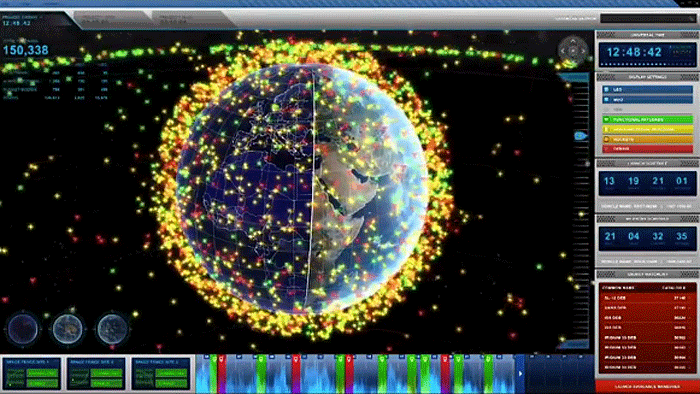
Here’s a video of Lockheed Martin’s version of the "Space Fence," which would track hundreds of pieces of debris floating around in Earth's orbit.
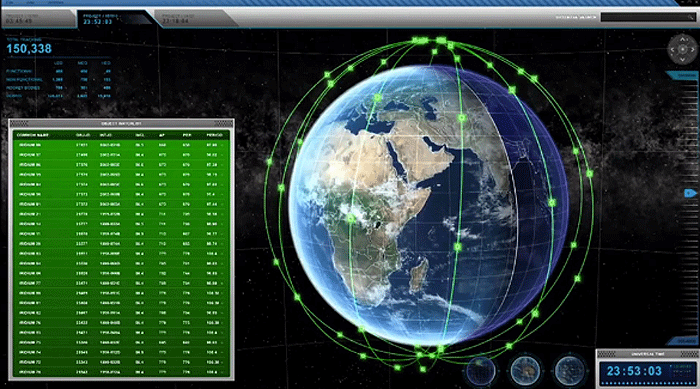
.
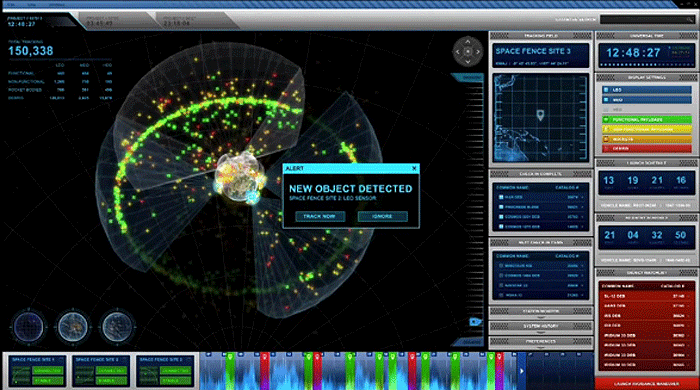
Space: so vast, so open. And yet, so littered with junk.
Hundreds of thousands of pieces of man-made debris are floating around out there, the detritus of more than 50 years of spaceflight. There have been chunks of dead satellites and spent rocket boosters — even a glove that an astronaut dropped in 1965 and a spatula that escaped from a space shuttle in 2006.
Because it zips along faster than a speeding bullet, the trash poses an ever-growing threat to the satellites that help the military communicate and gather intelligence and serve the world’s obsession with Google Earth and on-demand movies. Until last year, the Pentagon used what was called a “Space Fence” to track the junk and warn of potential collisions that make owners scramble to move their satellites out of the way.
But that system managed to keep up with only a fraction of it all, and it went out of commission last year. Now the Air Force is poised to take a more modern crack at the problem with a new Space Fence.
With a contract expected to be awarded in the next few weeks, the program is designed to be mankind’s best effort yet at tracking space pollution. But the new Space Fence still doesn’t provide what many think is the ultimate solution: cleaning up space.
“There’s a lot of stuff up there, and the impact of the new Space Fence will be to track more objects and smaller objects,” said Joan Johnson-Freese, a professor of national security affairs at the U.S. Naval War College.
Tracking the debris “is a necessity, but not sufficient,” she said. “We need to move on to an active plan for removal.”
Tracking smaller debris
The fence isn’t really a fence, but rather a high-frequency radar that is like a flashlight beam in a dark room that illuminates the bits of dust swirling around. All those little bits are then catalogued and tracked as they pass through the radar again and again, until analysts, using massive computer databases, can predict where those pieces of debris will be in the future and when they might come close enough to collide with something.
The new system is vital, officials say, because it will be able to track more and much smaller pieces of debris, which can whip around the globe as fast as 17,000 miles per hour. At that velocity, even something just a half-inch around would pack a punch like a bowling ball traveling at 300 mph, according to NASA.
“It’s absolutely essential,” said Todd Harrison, a defense analyst at the Center for Strategic and Budgetary Assessments. “It’s the most basic level of defense: You can’t defend against it, if you don’t know what’s there. . . . And we don’t want to be playing Russian roulette with our military space systems.”
After an intense competition that has gone on for several years and has already resulted in the awards of millions of dollars for prototypes, the high-stakes bidding has been whittled down to two competitors: defense giants Lockheed Martin and Raytheon.
“We believe the space fence is very critical to not only our country but to the world,” said Steve Bruce, a Lockheed vice president. “We do rely on space for almost everything. And without us being able to safely maintain equipment in space it would affect our worldwide economy pretty significantly . . . not to mention national security.”
Mike Nachshen, a Raytheon spokesman, said the company “is confident of our solution and looks forward to the Air Force’s decision.”
The Air Force plans to build at least one radar system, to be located in the Marshall Islands in the Pacific Ocean. (A possible second system could be located in western Australia).
Now, the Defense Department tracks about 20,000 items with other sensors and radars. But the new fence would be able to track as much as 10 times that. It would also be able to identify smaller items, some the size of a golf ball.
Armed with the catalogue of items, analysts forecast possible collisions, like the ones dramatized in the film “Gravity.” (But the objects are moving so fast that scientists say there’s no way astronauts could see what’s coming.) And for the approximately 1,100 working satellites — and also the international space station and the Hubble telescope — to get out of the way, the warnings often have to come well in advance.
In 2012, the United States issued more than 10,000 warnings of close calls, to U.S. and international satellite owners, helping with 75 “avoidance maneuvers” — satellites expending precious energy to move out of the way.
“It’s all predictive,” said Brian Weeden, a former Air Force officer and a technical adviser for the Secure World Foundation. “They’re predicting where things are going to be three, four days or a week into the future and looking for close approaches.”
But there is so much debris whizzing through space that some collisions are inevitable.
Knowing that the international space station is going to be pelted by all sorts of garbage — nuts, bolts, even flecks of paint can cause damage — it was designed to be the “most heavily shielded spacecraft ever,” NASA says, that “can survive impact with smaller pieces of debris.” NASA outfits its astronauts with spacesuits that are lined with a layer of material used in bulletproof vests to help protect them from flying projectiles.
The space shuttle was also designed to withstand the onslaught, and often returned to Earth with tiny pocks and even cracks in the windows, which were layered three deep for protection.
.
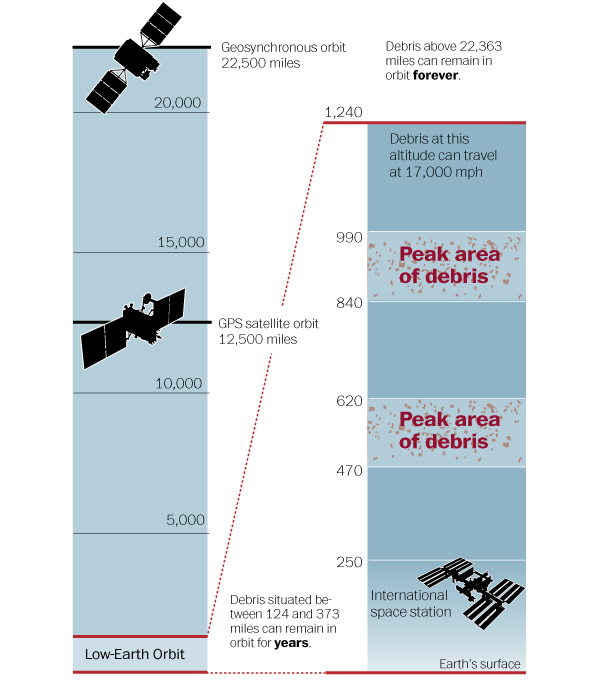
Most man-made space junk, is situated in low-Earth orbit, at an altitude below 1,240 miles.
.
Crashes spawn more junk
Space wasn’t always so polluted. But since Sputnik was launched in 1957, the debris has grown. Spent rocket boosters, laden with fuel, have exploded. Defunct satellites left in orbit have decomposed. And the junk begets more junk, as crashes create more debris, which can then cause even more collisions.
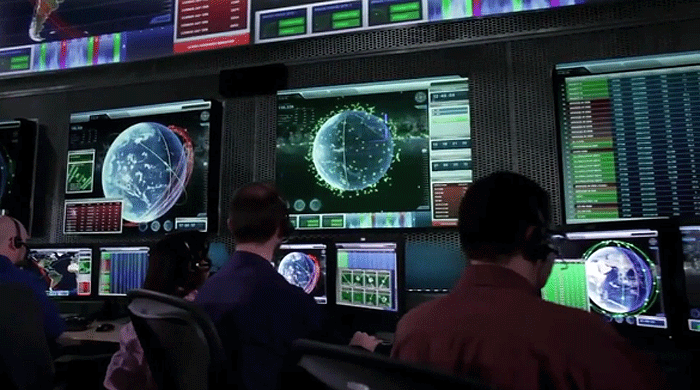
Much of the debris is attributed to two events, which added thousands of new pieces of garbage to space, severely exacerbating the problem but also raising awareness about the growing clutter.
In 2007, China blew up one of its dead weather satellites, and then two years later, an active U.S. communications satellite crashed into a defunct Russian satellite.
One answer is to find ways to limit the amount of potential debris that enters space.
Some rocket boosters are now being designed to fall back to Earth more quickly, so that within 25 years, they hit the atmosphere and disintegrate. The boosters, which carry excess fuel, now are built with vents, allowing the fuel to escape, which can help prevent the boosters from exploding.
Even satellite cameras are now designed in a way to prevent space pollution.
“In the old days you’d blow the lens cap away, and some debris would always result from that,” said Dave Baiocchi, a senior engineer at the Rand Corp. “Now they tether the lens cap.”
The ultimate answer, of course, is to clean things up. But that’s far more difficult than it might seem, said Johnson-Freese, the Naval War College professor.
It’s incredibly expensive, for one thing, and cleaning up space isn’t exactly the kind of domestic program that members of Congress can rally behind. Then there are the international tensions. Countries continue to own the junk they’ve launched into space, and China, for example, wouldn’t be thrilled if the United States decided to take down one of its satellites.
“There are legal issues,” Johnson-Freese said. “There are no salvage laws in space. Even if we had the political will to [salvage junk], which I don’t think we do, we couldn’t bring down the big pieces because we don’t own them.”
Swiss scientists are working on what’s been called a “janitor satellite,” a sort of orbital garbage truck called CleanSpace One that would remove junk.
There’s been some discussion of “putting a surcharge on every launch” that would go into a global fund and then help pay for cleanup, Baiocchi said. But it’s still in the early stages.
“This is,” he said, “uncharted territory.”
Even though the movie “Gravity” raised awareness of the space debris problem, Johnson-Freese doesn’t think there will be real action on removing the rubbish until there’s a crash that “affects people, and the general public says, ‘Why isn’t my cellphone working?’ ”
.

Quelle: Lockheed / The Washington Post
.
Update: 3.06.2014
.
Air Force awards Space Fence, Fab-T contracts
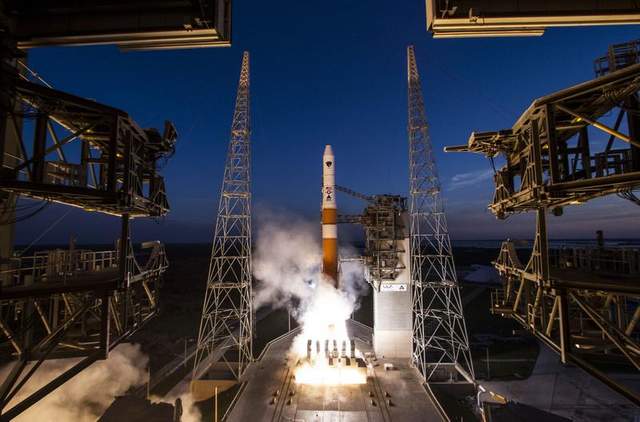
The US Air Force awarded the contract for its Space Fence program to Lockheed Martin on June 2. As space launch, such as this Delta IV rocket carrying a GPS satellite into space May 16, becomes more common, space situational awareness will remain vital. (Air Force)
.
WASHINGTON — The Air Force announced two major awards today, awarding Lockheed Martin the contract for its Space Fence program and Raytheon the winner of its Family of Advanced Beyond Line-of-Sight Terminals (FAB-T) system.
The $914.7 million Space Fence contract puts the world’s largest defense company in charge of developing the Space Fence system, a key asset in the service’s plans for space situational awareness (SSA). Lockheed was in competition with Raytheon for the program.
The contract awards Lockheed $415 million for RDT&E efforts immediately, while the rest will be earned over the course of the 52 period the company has before it must reach initial operational capability.
Space Fence consists of a large S-band radar on the Kwajalein Atoll of the Marshall Islands, located in the Pacific Ocean. Due to its proximity to the equator, Kwajalein provides a wide angle for the radar to take in as much of the sky as possible. With the Earth’s rotation, the stationary radar creates a “fence” through which everything in space should pass through over the course of 24 hours.
The fence replaces the Air Force Space Surveillance System, an older design made up of three transmitter stations and six receiving stations across the southern portion of the US. That program was mothballed last year in a budget reduction move.
If the service can find money in the future, it wants to invest in a second site in Australia. Whether that happens is up in the air, given funding uncertainty for the Pentagon going forward.
The SSA issue was a hot topic during May’s National Space Symposium, held in Colorado Springs, Colorado. Gen. William Shelton, the head of the Air Force’s space command, highlighted how space has become more crowded while tracking capabilities have failed to keep up.
“Currently, we track more than 23,000 objects in space,” Shelton said in his May 20 keynote address. “However, our sensors cannot see the estimated 500,000 pieces of debris between 1 and 10 centimeters in size. We’ve learned some lessons the hard way with orbital collisions and this increased traffic in space is causing collision-avoidance maneuvers at a pace we’ve never before experienced. After five decades of relatively benign operations, space is becoming an increasingly challenging place to operate.”
The service wanted to award on the program a year ago, but was forced to delay while the Pentagon finished its Strategic Choices and Management Review.
Lockheed has said it views SSA as a potentially rich market space to move into. The company is pushing its SPOT program, a ground-based SSA asset, as a potential companion for Space Fence.
Steve Bruce, vice president for Advanced Systems at Lockheed’s Mission Systems and Training business, discussed the company’s plans for Space Fence in April. He told reporters Monday that the company was “extremely excited” by the contract award.
“This is a really not only national but worldwide issue, and when this system comes online it will be a national and world asset,” Bruce said of the program, reiterating that the company is confident it will have Space Fence up and running by 2018.
The contract is designed with a series of options for the Air Force. The most notable ones are the option to develop the second site, located outside of Perth, Australia, as well as a pair of logistic support contracts for the first site.
The Air Force would have the option of developing the second site after the first site has completed its testing process. That option requires Lockheed to have the Australian site up and running roughly three years after the 2018 IOC date for the Kwajalein location.
Bruce declined to comment on how much the larger contract, with all the options included, could be worth. But based on the amount of work included in those options, it could easily be worth another $1 billion.
The open question now is whether Raytheon will challenge the award. It has a ten day window in which to issue a challenge. Bruce declined to speculate on whether Raytheon would issue a challenge.
“Raytheon is the world leader in advanced radar technology, and has successfully designed, developed and deployed large radars around the globe, including in austere locations like Thule, Greenland,” Michael Nachshen, company spokesman, said in a statement. “Raytheon has been notified by the Air Force on their Space Fence decision; pending our post-decision debrief with the Air Force, it is inappropriate to comment at this time.”
Raytheon selected for FAB-T
In better news for Raytheon, the Air Force has selected it as the winner to produce its Family of Advanced Beyond Line-of-Sight Terminals (FAB-T) system.
The $298 million contract gives the Massachusetts-based company a major win against incumbent Boeing.
The FAB-T program provides the nation’s leaders with secure command and control communications, even in the event of a nuclear war. The terminals are designed to work with the service’s Advanced Extremely High Frequency, or AEHF, network of secure satellites.
The program calls for the procurement of 84 command post terminals for America’s fleet of B-2, B-52 and RC-135 aircraft. While that is a sizable number, the original vision for the FAB-T program called for 100 more terminals.
The contract language, released by the Air Force Monday evening, noted that the contract was for the command post terminals only and includes options for future systems.
“As a result of this down-select decision, low rate initial production, full rate production and interim contractor support contract options may be exercised to deliver FAB-T CPT-Only Terminals,” reads the service’s official contract language, released Monday evening. “The Phase 2 production contract options for LRIP, FRP, and ICS may be exercised after completion of Milestone C. Fiscal 2013 through 2019 aircraft and other procurement funds are programmed for this effort, with $31,274 being obligated at time of award.”
As with all major contract awards, Boeing now has ten days to consider a protest of the award.
“Boeing is disappointed by the decision,” company spokesman Richard Esposito wrote in a statement. “We will request a formal debrief from the Air Force and will determine a path forward after that formal debrief is completed.”
Quelle: USAF
5101 Views
